The Loire Valley is a fertile region that spans Central France. It’s home not only to beautiful rivers and vineyards but hundreds of castles as well.
These Loire Valley castles range in their history and architecture, making a tour through the valley a unique experience. If you’re planning to take a trip to this region, you’ll definitely want to make sure to visit some of the best Loire castles in the area, some of which are described below.
Disclaimer: This post contains affiliate links. This means that should you click on certain links and then subsequently purchase a product, I will receive a small commission.
19 Famous Castles to visit in the Loire Valley
Loire Valley Castles Map

How to Get Around the Loire Valley The best way to visit the castles in the Loire Valley is by car. I recommend booking a car through Discover Cars, where you can compare all rental car agencies’ prices, and you can modify or cancel your booking for free. They also guarantee the best price. Click here for more information and to check the latest prices. You can also book a day trip from Paris to visit the best Loire Valley castles, the Châteaux Chambord, Chenonceau, and Cheverny. Click here for more information and to book this tour. Alternatively, you can take shuttle buses from Blois to see some of the Loire Valley castles. Click here for more information. Where to Stay in Loire Valley Anne D'anjou Hôtel & Spa: Located in Saumur this historic hotel is listed as a historical monument and features rooms with the original Louis XVI decor and views of Château du Saumur. There is an on-site swimming pool, restaurant, and spa. Parts of the hotel were created during the Empire period and still retain their historical design, the staircase is listed on its own and sits underneath a lavish original Trompe l’Oeil ceiling painted in 1730. To stay in this piece of history book here. Hôtel De France Et De Guise: In the historic city of Blois this 19th century hotel is just 150 metres from the Château of Blois. Some of the rooms overlook the Château and others look into the Augustin Thierry garden. Rooms are bright and budget-friendly with a delicious breakfast serving local produce from artisanal bakers, coffee roasters, and dairies. Book your stay here. Relais de Chambord: To stay within the estate of a Château book the Relais de Chambord on the 5,440 hectare estate of Château de Chambord. This luxury hotel is within its own nature reserve and offers a Michelin starred restaurant, private wineries, 4x4 safaris, and hot air balloon rides. Each room is individually styled and they have recently added a floating suite on a private flat bottomed traditional Loire boat on the Cosson Canal. Book your stay here.
1. Château of Chambord
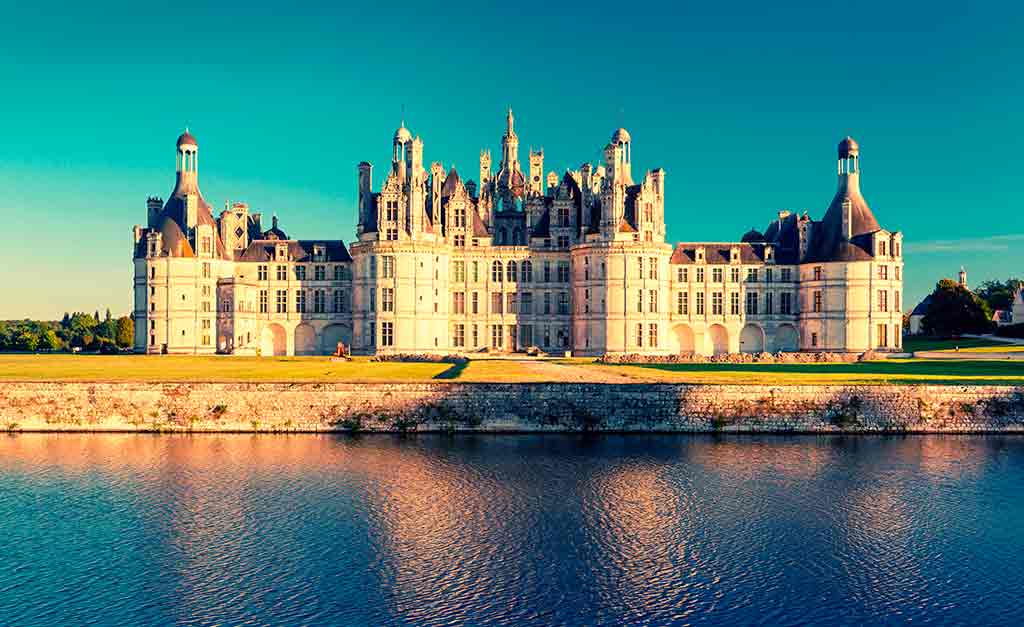
The Château of Chambord was built in 1519 by François I and features stunning French Renaissance architecture. Considered to be one the best chateaux in Loire Valley, this UNESCO site offers tours of its interior where you can view its intricate architecture and impressive tapestry collection.
When done exploring it, you can step outside into its formal garden to find native French plants. You can also explore the surrounding park, which is filled with wild boars, roe deer, and bats, as well as numerous walking trails. In addition to this, the castle has a restaurant and offers horse carriage rides around the grounds.
There is also a Horse and Bird of Prey Show. The castle is open year-round, although times vary throughout the year. Tickets are necessary and range in price depending on age.
Where: Château
When: 1519
Open for visit: Yes, for more information, check here.
Click here to buy your skip-the-line ticket to Chambord Castle.
2. Château of Sully-sur-Loire
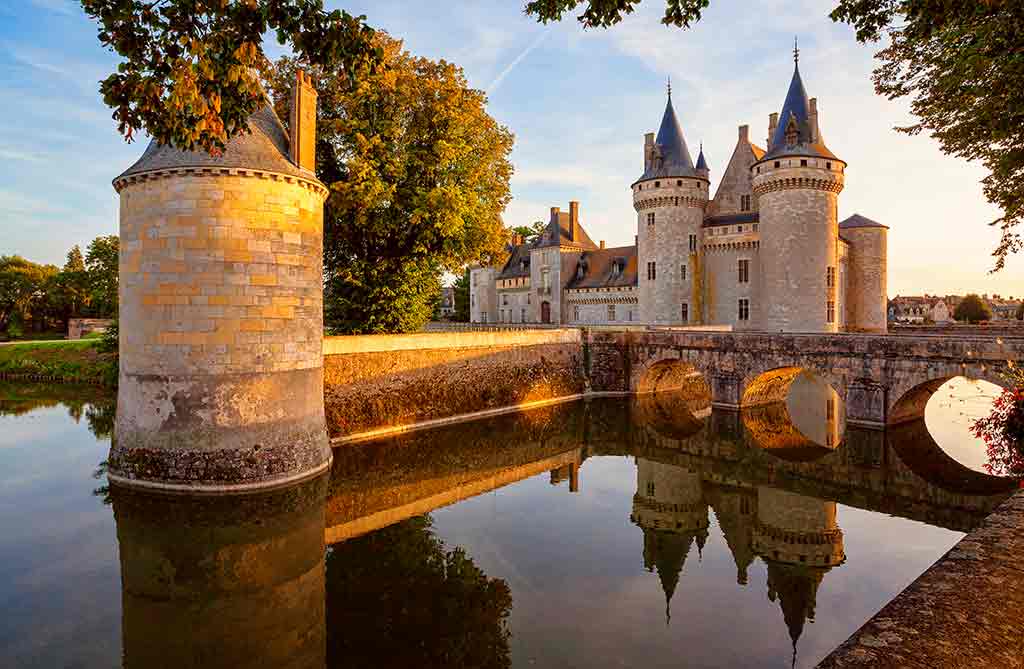
This beautiful Loire Valley chateaux, which can be translated as the Castle of Sully, is a medieval fortress that was eventually turned into a residence. It is where Duke de Sully once lived and features beautiful Renaissance architecture.
There are about two floors guests can explore, which include various collections of art. The castle has a few winding staircases, a moat, and plenty of towers to walk through.
Guided tours are available in both French and English and last about an hour and a half, although their times vary depending on the time of year, you visit. Keep in mind photography is allowed but without flash.
Where: Chemin de la Salle Verte
When: 1395
Style: Renaissance
Open for visit: Yes, for more information, check here.
3. Château of Blois
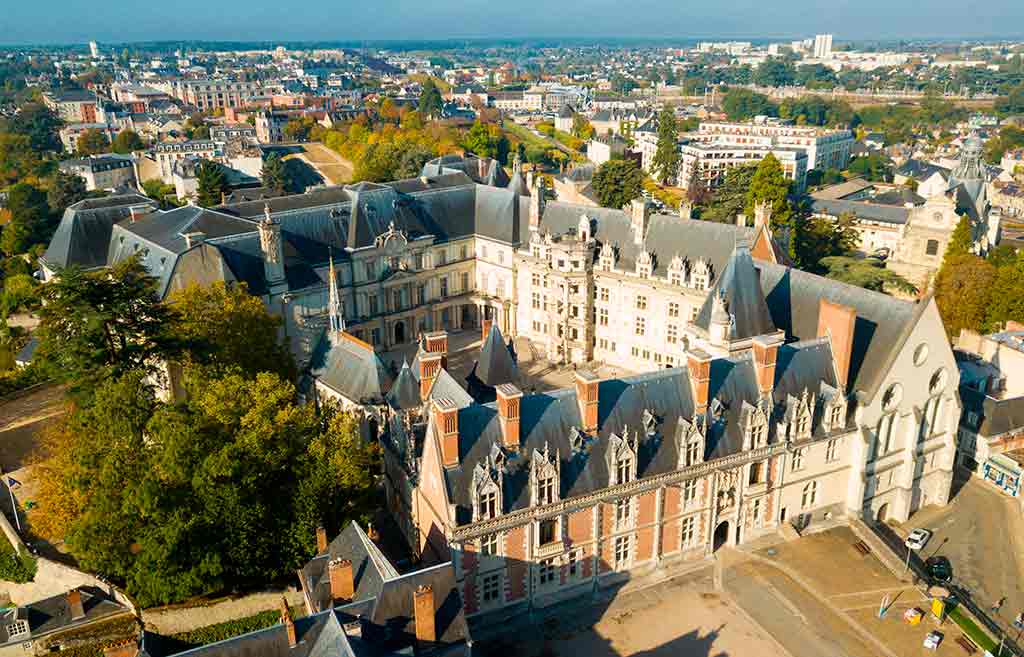
The Château of Blois is situated within the center of the city of Blois and was built in 1608, although various additions have been added since then. It features four wings that display four different architectural styles from the 14th-17th centuries. The castle once housed seven kings and ten queens and was designated a historical monument in France in 1845.
You can take a tour of the castle’s interior, which includes a handful of beautiful portraits and intricate wall carvings. There’s also a fine arts museum inside for guests to visit, which has over 35,000 pieces in it.
If you don’t mind taking some time to climb up a large staircase, you can reach the top of the castle’s tower, which will give you stunning views of the Loire River. After exploring the castle, you can step outside to its grounds, where you can visit a fragrant rose garden.
This castle also hosts a Sound and Light Show at night, which lights the castle up in various colors and has special effects to help tell guests about the castle’s history in a unique way. Keep in mind separate tickets are required to attend the show.
Where: Βlois
When: 1608
Style: Renaissance
Open for visit: yes, for more information, check here.
Click here to book your tickets to the Royal Château de Blois.
4. Château of Cheverny
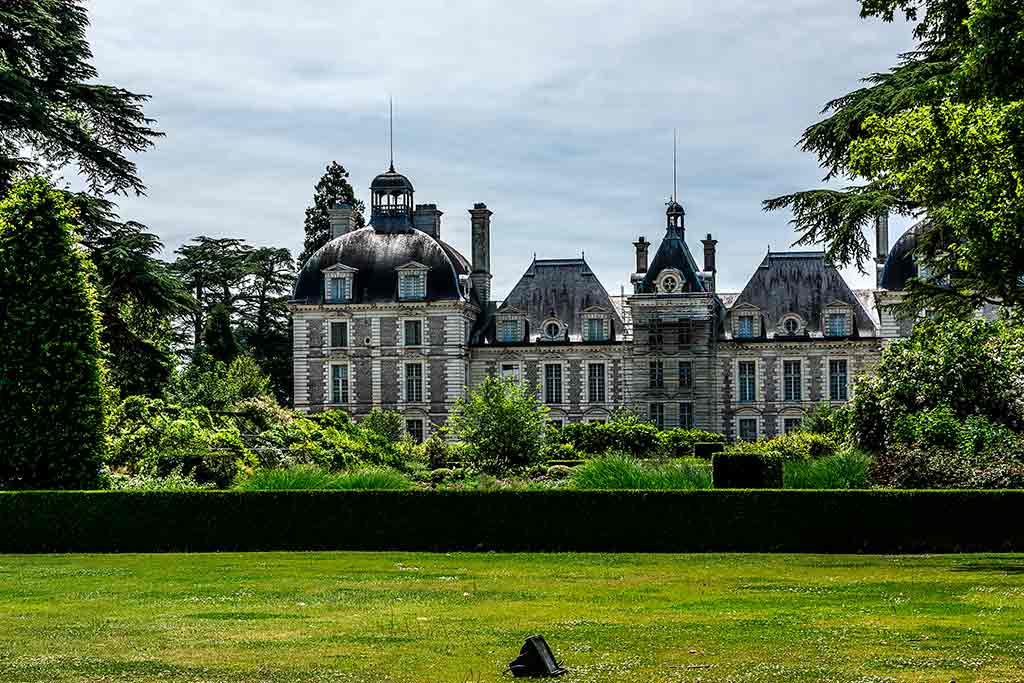
This magnificent chateau of the Loire showcases beautiful displays of Classical architecture and is known for remaining in the Hurault family for over 600 years.
This structure is considered to be one of the most furnished castles in the Loire Valley and allows you to view many pieces of historic furniture and art.
In addition to this, the castle is very family-friendly as it offers various activities for children, like a mystery game where kids can hunt through the castle to search for clues to solve a crime.
The Château of Cheverny also features gardens that are filled with wisteria and tulips, as well as a labyrinth. There’s also a boutique and cafe for guests to stop by.
In addition to this, the castle hosts events throughout the year, like a Venetian weekend which brings the popular Carnevale atmosphere to its grounds. The castle is open at various times throughout the year, and ticket rates depend on the time of year that you visit.
Where: Cheverny
When: 1634
Style: Renaissance
Open for visit: Yes, for more information, check here.
5. Château de Chaumont
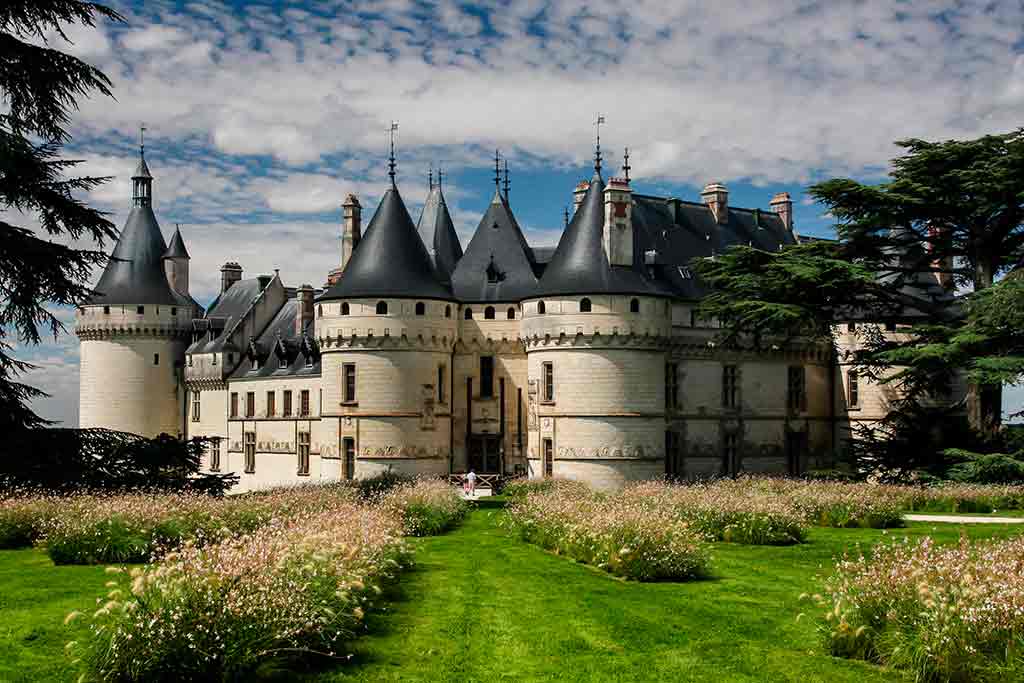
The Château de Chaumont was built in 933 by Odo I before eventually being destroyed by Louis XI and then later rebuilt in the 15th century. The castle is home to many distinctive architectural details, including medallions by famed Italian sculptor Jean-Baptiste Nini.
You can tour the interior of the castle or walk around its grounds, where you’ll find chestnut trees, bridges, and large wildflower fields.
There are also stables (where you can see antique horse-drawn vehicles), a bee house, a vegetable garden, and a pet cemetery. In addition to this, the castle hosts various art shows throughout the year and is home to the International Garden Festival.
This structure is opened at different times throughout the year but has longer hours during the summer. Ticket rates also vary depending on the time of year you decide to stop by.
Where: Chaumont-sur-Loire,
When: 18th Century
Style: Renaissance
Open for visit: Yes, for more information, check here.
Click here to buy your skip-the-line tickets to the Château de Chaumont.
6. Château de Chenonceau
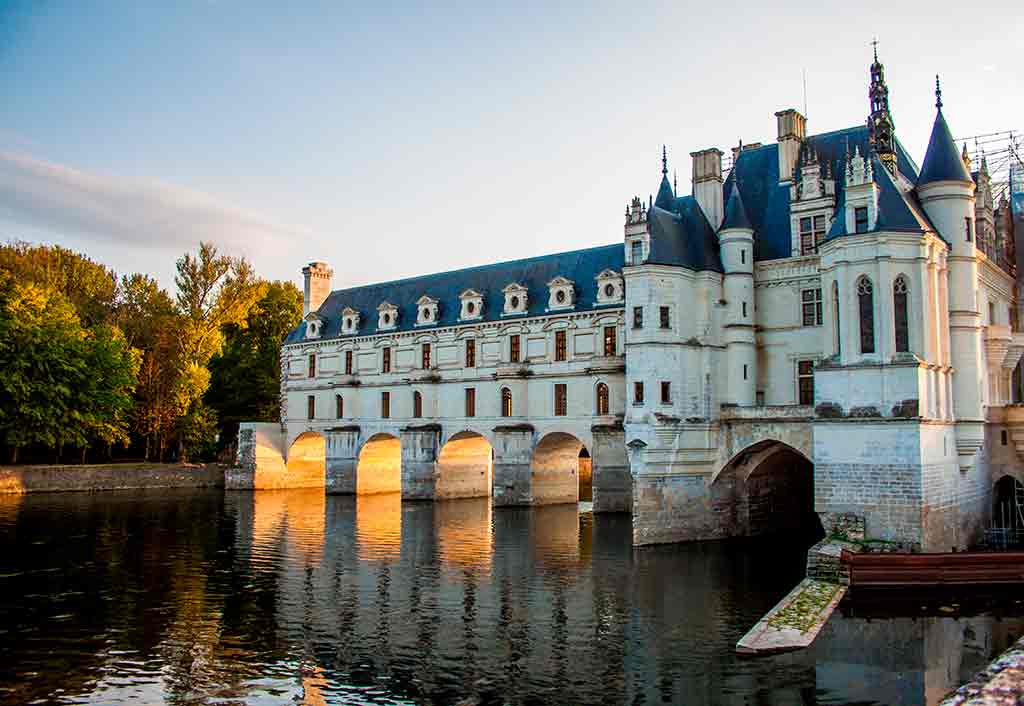
The Château de Chenonceau towers over the nearby Cher River and features a stunning mixture of Gothic and Renaissance architecture. Built in 1513, the castle is home to a large collection of 16th to 17th-century tapestries and numerous intricately decorated rooms you can tour.
The castle is known for its many gardens, which include various species of plants, lakes, and bridges. You can also attend a unique event during the summer the castle hosts, which allows you to take a night walk through the gardens, which are illuminated by soft lanterns and candles.
This castle hosts floral workshops throughout the week and has a fine-dining restaurant where you can grab a bite to eat. The castle is open all year, although the times depend on the season. Keep in mind tickets are necessary to enter, and prices vary on age.
Where: Chenonceaux
When: 11th Century
Style: Gothic
Open for visit: Yes, for more information. check here.
Click here to buy your tickets to Château de Chenonceau
7. Château d’Amboise

This luxurious castle was once a family residence before being taken over by the French monarchy in the 15th century. Since then, the castle has been visited by many royal families and historical figures, including Leonardo da Vinci. This UNESCO site was designated a French historic monument in 1840.
You can tour the interior of this castle and see its many beautiful Gothic carvings. There are also balconies you can climb to get stunning views of the Loire Valley. Besides this, the castle has manicured gardens for guests to explore, as well as a small cafe that serves fresh pastries.
The Château d’Amboise is open throughout the year, and ticket rates vary on age. You can take a self-guided tour of the castle or sign up for a behind-the-scenes guided tour which will take you to a few closed-off areas, although keep in mind this might cost a bit extra.
Where: Amboise
When: 15th Century
Style: Renaissance
Open for visit: Yes, for more information, check here.
Click here to book your skip-the-line ticket to Amboise Castle.
8. Château de Villandry
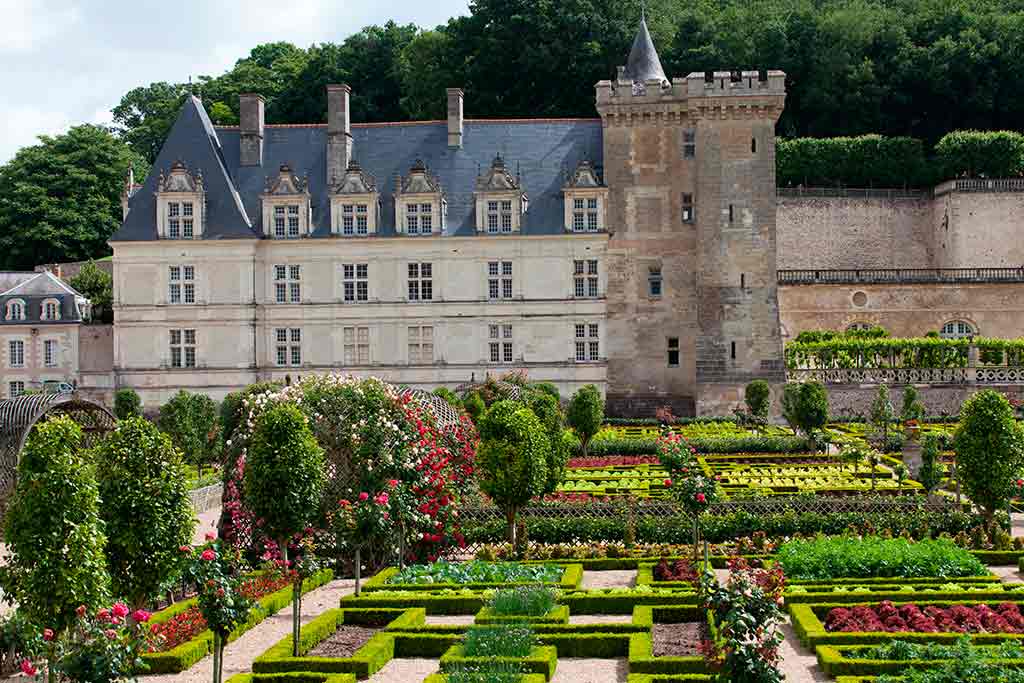
The Château de Villandry, an exquisite country house, was built in 1536 and rests on the banks of the Loire River. The house features beautiful displays of avant-garde architecture, which can be viewed both indoors and outdoors.
You can take a tour of the house to see various rooms, which include the drawing room, dining room, kitchen, library, and numerous bedrooms. You’ll also find a few photography and art exhibits inside.
While it has beautiful architecture, the Château de Villandry is mainly known for its flourishing gardens. You’ll find plenty you can wander through, like the ornamental garden, kitchen garden, moat garden, and pavilion garden, which are filled with various types of plants.
There’s also an organic garden on the grounds where you can learn about natural growing methods.
Where: Villandry
When: 1536
Style: Renaissance
Open for visit: Yes, check here for more information.
Click here to buy your tickets to Château de Villandry.
9. Château d’Azay-le-Rideau

The Château d’Azay-le-Rideau features early French Renaissance architecture and was built around 1518-1527 by King Francis I. Situated next to the Indre River, this castle is especially known for its façades and water mirror, which the castle brilliantly reflected in the river.
Tours can be taken of its interior, where you can view many different rooms, including a Renaissance bedroom, which features various types of textiles and wall mattings.
There is also a surrounding park that is filled with foreign and native plant species, including cedars and American tulip trees. It’s also home to numerous types of wildlife, like dragonflies and bats.
The castle is open all year, although times vary on seasons. Tickets are also required, and prices reflect age ranges.
Where: Azay-le-Rideau
When: Built between 1518 and 1527
Style: Renaissance
Open for visit: Yes, for more information, check here.
Click here to book your tickets to the Château d’Azay-le-Rideau.
10. Château du Clos Lucé
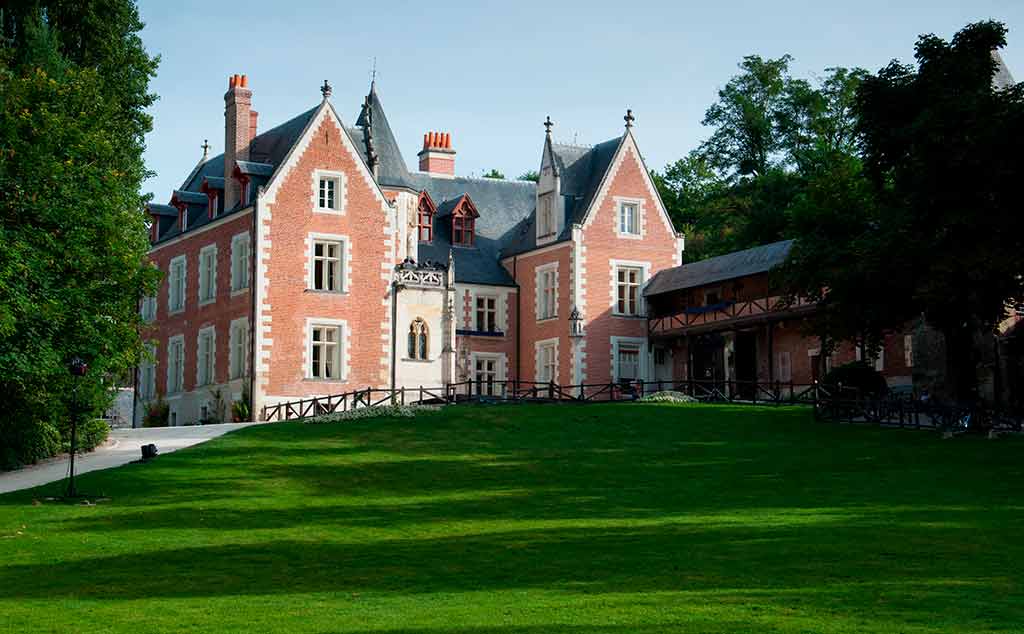
Once known as Manoir du Cloux, the Château du Clos Lucé was built in 1106 and is best known for being where Leonardo da Vinci took his last breath before dying in one of the castle’s bedrooms.
You can tour its interior to view the pink bricks that make up the castle or the outdoor gardens that feature sculptures of da Vinci’s experiments.
In addition to this, the castle has a small crêperie where you can grab a quick bite to eat while sitting next to fragrant Mona Lisa roses. For dinner, you can stop by the L’Auberge du Prieurė, where you can dine by candlelight on Renaissance-era meals.
There’s also a large Renaissance music festival during the fall you can attend. Tickets can be bought online for a self-tour, and prices vary depending on age.
Where: Amboise
When: 1519
Style: Gothic
Open for visit: Yes, for more information, check here.
Click here to buy your skip-the-line tickets to Château du Clos Lucé.
11. Château de Chinon

The Château de Chinon resides near the Vienne River and was founded by Theobald I. The medieval fortress was also visited by Joan of Arc. This UNESCO castle is filled with a plethora of medieval-era artifacts, including knights’ armor and shields.
You can also stop by its clock tower. The Château de Chinon is open throughout the year, although times vary for different seasons. Tickets are required for guests, although those who are seven years old and younger can enter for free.
Where: Chinon
When: 1160
Style: Renaissance
Open for visit: Yes, for more information, check here.
Click here to buy your tickets to Chareau de Chinon.
12. Château de Loches
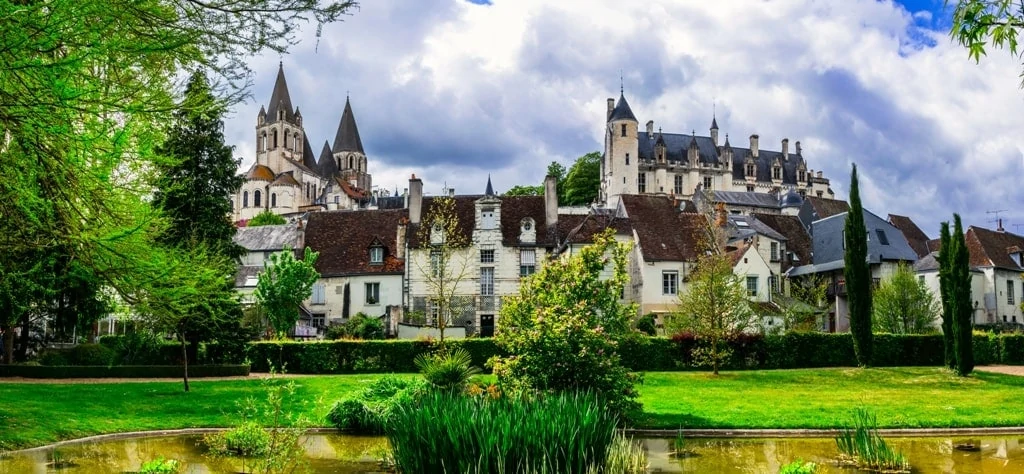
The Château de Loches was built in the 9th century by King Philip II of France. The castle is situated near the Indre River and is known for its many towers and for housing the largest collection of medieval armor in the area.
Tours can be taken of the interior, where guests can view massive fireplaces, lanterns, and tapestries. You can also visit the Agnes Sorel Tower, which has vibrant stained glass windows. Tickets are required to enter, although children 12 years and younger can enter without one.
Where: Loches
When: 9th Century
Style: Renaissance
Open for visit: Yes, for more information, check here.
Click here to buy your tickets to Chateau de Loches.
13. Château de Meung-sur-Loire
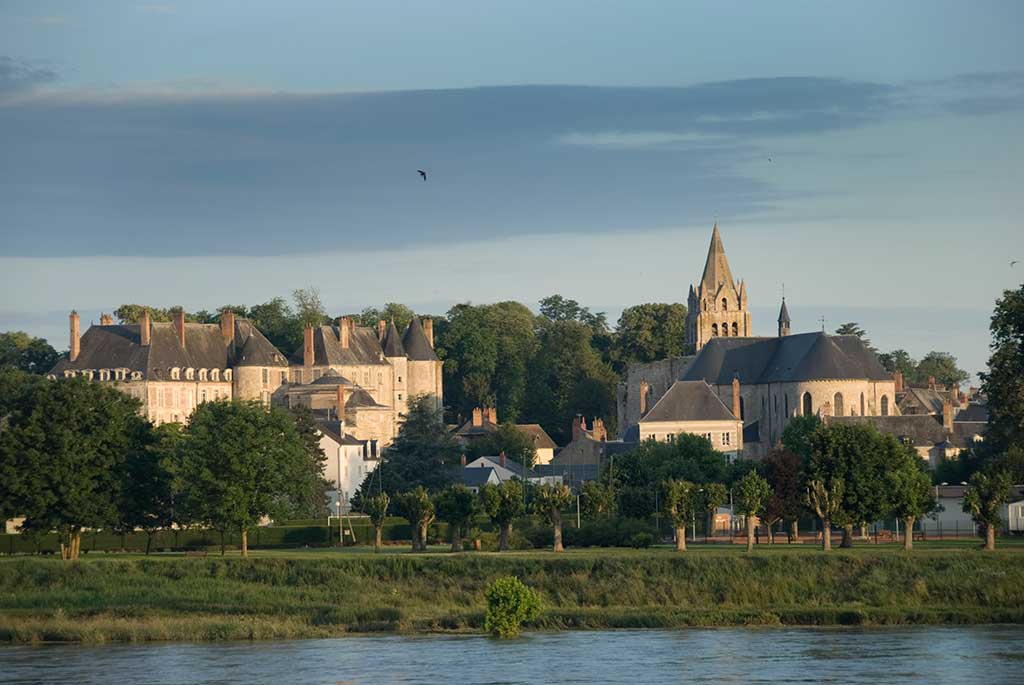
Created in the 12th century, the Château de Meung-sur-Loire was once the home of the Bishops of Orléans before being destroyed and rebuilt numerous times in the years to come.
Because of this, the castle is constructed with a mixture of architecture and rooms from different time periods, like a 16th-century spiral staircase and a 13th-century storeroom.
There’s also a medieval dungeon you can visit while here. Besides this, the castle has a few French and English-style gardens, including one that hides the ruins of an ancient pavilion.
The castle is open at different times throughout the year. Tickets are required and vary in their price depending on the tour you decide to take, although some discounts are available.
Where: Meung-sur-Loire
When: 12th Century
Style: Classical
Open for visit: Yes, for more information, check here.
14. Château d’Ussé
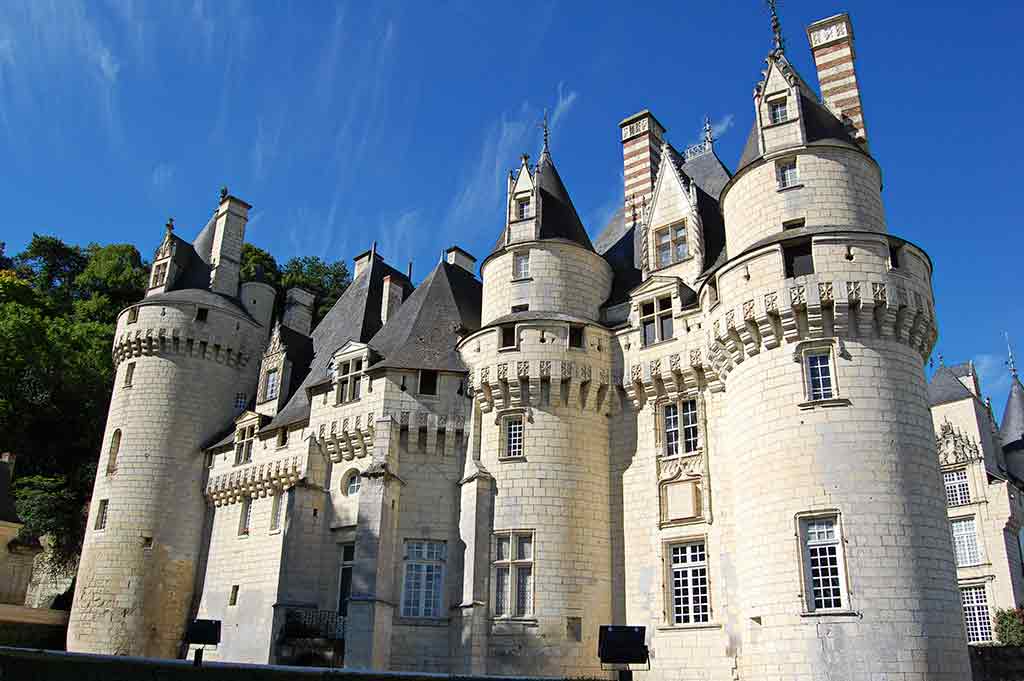
The Château d’Ussé resides next to the peaceful Chinon Forest and overlooks the nearby Indre Valley. Built in the 11th century by Gueldin de Saumur, it later served as the home to the Duke of Blacas. This castle is also believed to be where writer Charles Perrault was inspired to write Sleeping Beauty.
You can tour the interior, where you’ll find plenty of rooms to explore, like the Guard Room, King’s Chamber, and Vauban Salon, which houses an antique Florentine cabinet filled with secret compartments. You can also visit the Vault downstairs which is one of the oldest rooms in the castle.
The castle is also home to formal French gardens, which are filled with fountains and lemon trees. Each year the castle hosts a special exhibit for guests to view, the most current being one focused on embroidery. Ticket prices range on age, although those eight years and younger can enter for free.
Where: Rigny-Ussé
When: 17th Century
Style: Renaissance
Open for visit: Yes, for more information, click here.
15. Château de Saumur
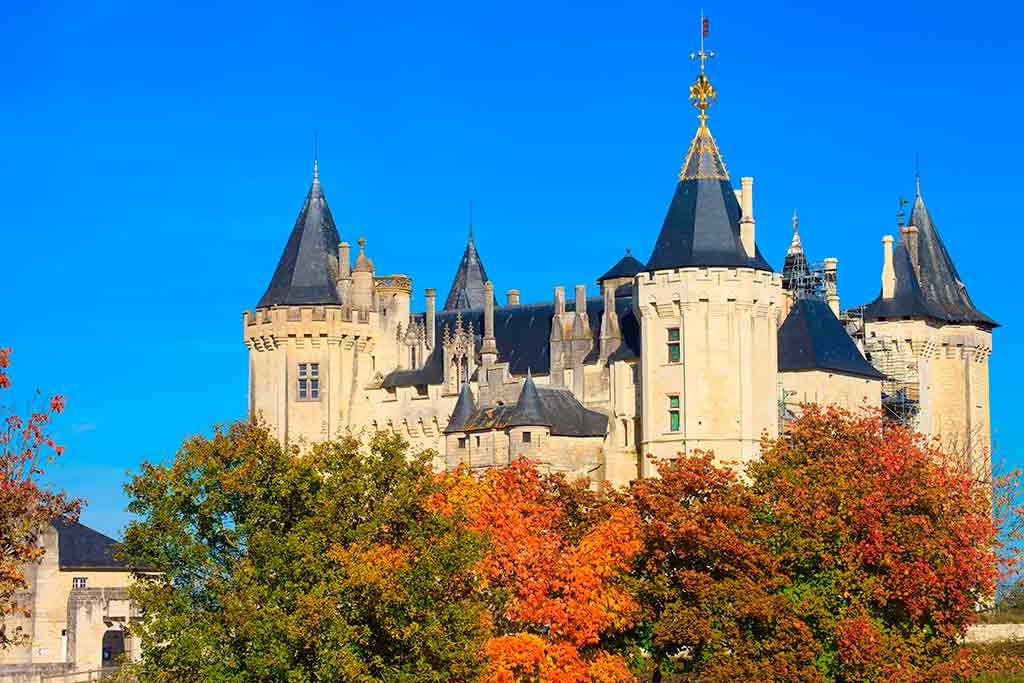
This 10th-century castle is located in the small town of Saumur and was built by Theobald I to help protect against possible Norman invasions. This structure is packed with collections of various decorative arts, tapestries, and furniture.
There’s also a horse exhibit that contains important horseback riding equipment like bits and saddles. The castle is open at different times throughout the year and requires a ticket in order to enter, although there are reduced rates for some tours.
Where: Saumur
When: 10th Century
Style: Gothic
Open for visit: Yes, for more information, check here.
16. Château de Langeais
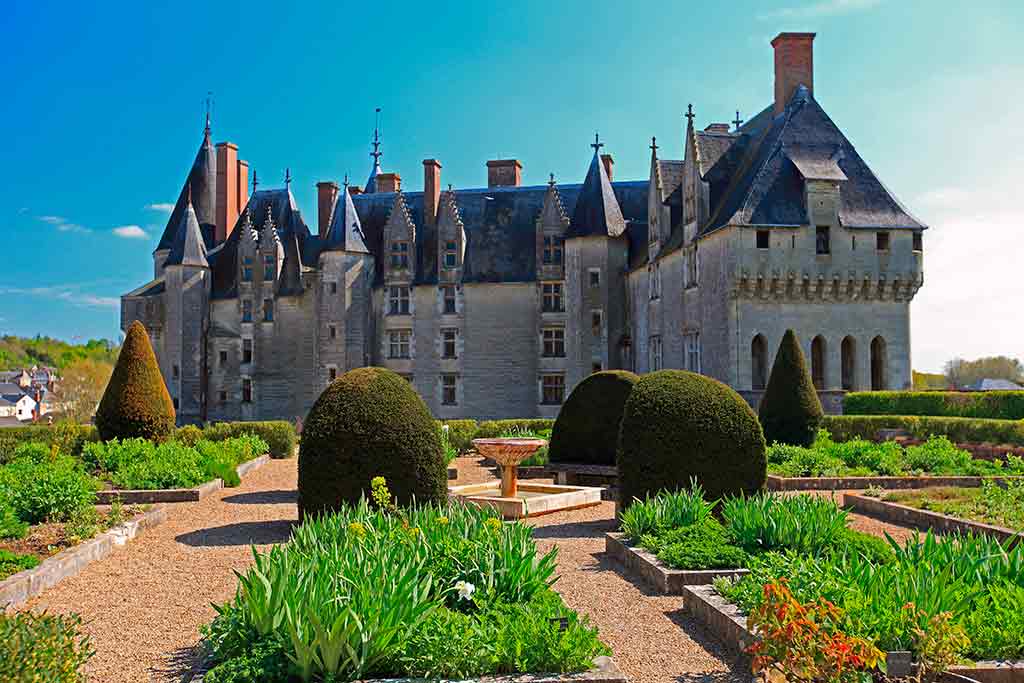
The Château de Langeais is a medieval castle that rests near the Roumer River. Built in the 10th century by Fulk Nerra, it was eventually attacked and taken over by Odo I.
The castle features over 15 furnished rooms for guests to explore, many of which are decorated to recreate the Middle Ages. The castle also has an exhibit of wax figures that recreates a medieval royal wedding.
When you’re done touring the interior, you can step outside to get a breath of fresh air in the nearby park. The castle is open year-round and offers different types of tours for groups and families.
Where: Langeais
When: 10th Century
Style: Romanesque
Open for visit: Yes, for more information, click here.
17. Château de Beauregard
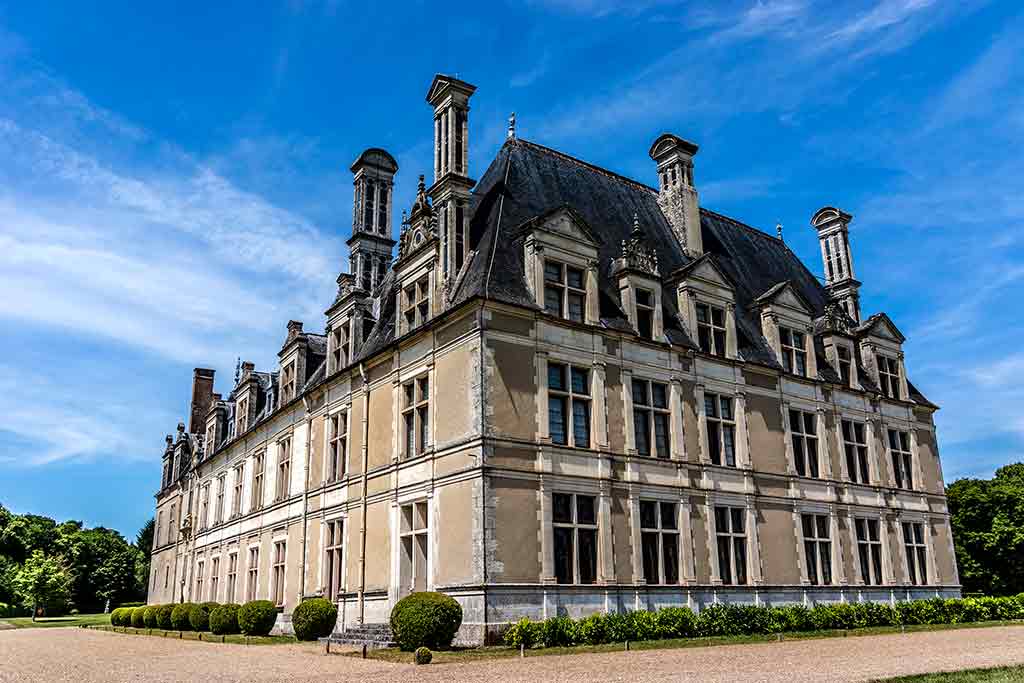
The Château de Beauregard was created in 1545 and features Renaissance architecture. It serves as the King’s Minister’s residence and offers tours where you can see fireplaces, intricate woodworking, an old library, and a bell’s study.
There’s also a portrait gallery inside, which features numerous portraits of historical French royal figures in chronological order, one of the only of its kind in Europe.
When you’re done exploring the interior, you can visit the castle’s park and gardens or grab a bite to eat at its small cafe. Guided tours are available in both French and English, although specific tickets and times for them will vary.
Where: Cellettes
When: 1545
Style: Renaissance
Open for visit: Yes, for more information, check here.
18. Château de Valençay
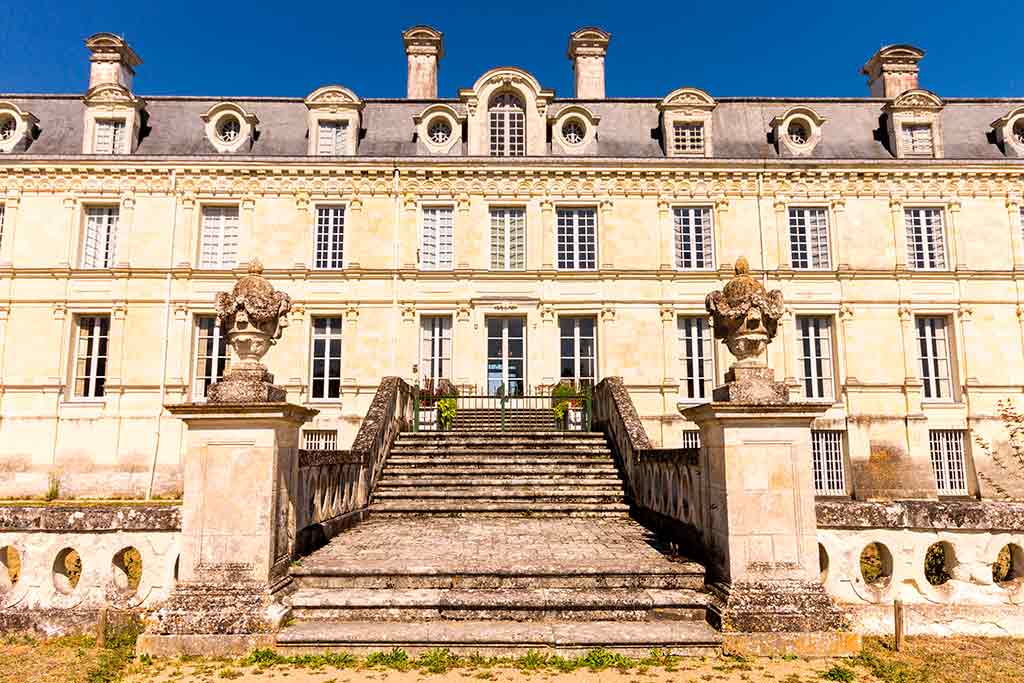
The Château de Valençay is best known for being home to the d’Estampes and Talleyrand-Périgard families. It’s also the location where Charles Maurice de Talleyrand-Pėrigard, the former minister of foreign affairs for France, is buried.
Overlooking the Nahon River, the castle showcases Renaissance architecture and has many grand rooms for guests to explore, like the Lounge, Blue Salon, and Hall of Treasures. The interior is also filled with different collections of 18th-century furniture.
Where: Valençay
When: 1540
Style: Renaissance
Open for visit: Yes, for more information, click here.
19. Château de Brézé
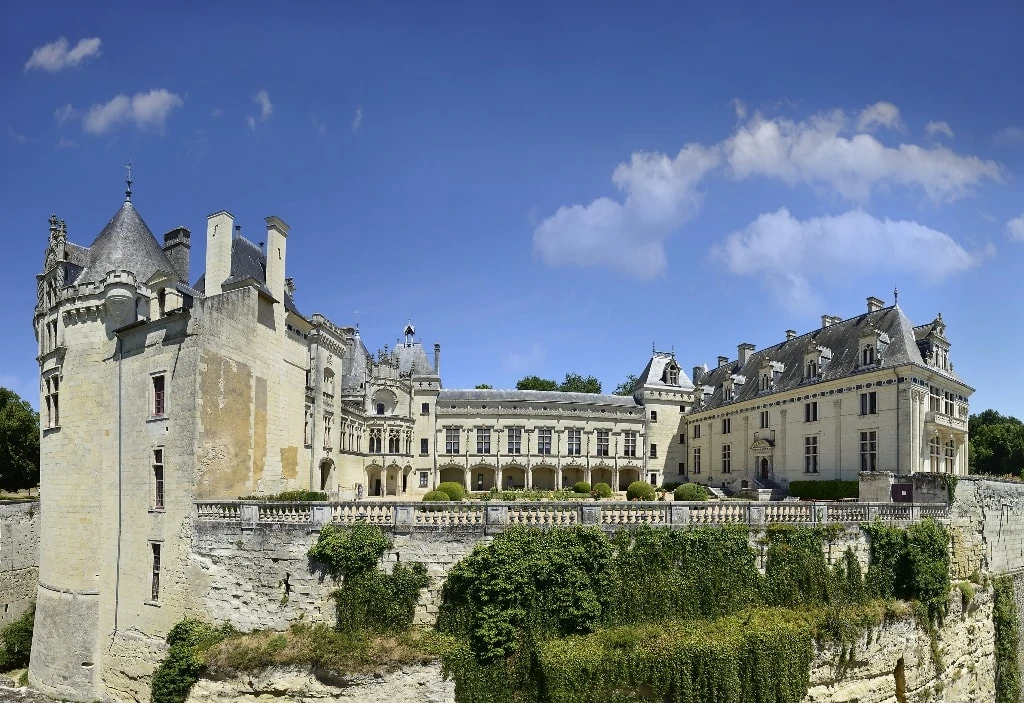
This castle was built during the 11th-19th centuries and features a mixture of medieval and Renaissance architecture. This dry-moated castle offers tours where you’ll be able to view its drawbridge and explore its dark underground tunnels.
There are also gardens nearby that you can wander through. In addition to tours, the Château de Brézé offers various events throughout the year, like a medieval jousting tournament. Tickets are necessary, and prices depend on age, although there are small discounts for families.
Where: Brézé
When: between the 11th and 19th centuries.
Style: Renaissance
Open for visit: for more information, check here.
The castles that are scattered around the Loire Valley are not only beautiful structures with intricate architecture but ones that each have their own unique story. A visit to these best castles in the Loire Valley will certainly be a trip you’ll never forget.
FAQ’s about the Best Castles in the Loire Valley
There are many beautiful chateaux along the Loire river, but the best castles in the Loire Valley are Château de Chambord, Château de Chenonceau, Château d’Azay-le-Rideau and Château d’Ussé.
The Château de Chambord is the best castle to visit in the Loire Valley. The UNESCO site was built in 1519 by François I., featuring stunning French Renaissance architecture and an impressive tapestry collection.
Along the Loire Valley in France, there are about 300 beautiful castles. The most popular castles to visit are the Château de Chambord, Château de Chenonceau, Château d’Ussé, and Château d’Azay-le-Rideau.
The most famous chateaus (chateaux) in the Loire Valley are Château de Chambord, Château de Chenonceau, Château d’Azay-le-Rideau and Château of Sully-sur-Loire.
